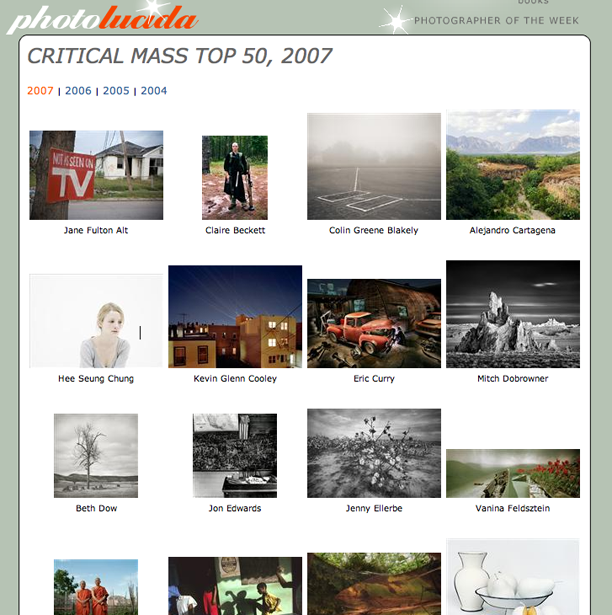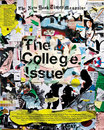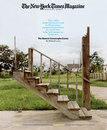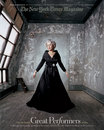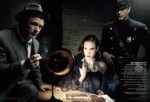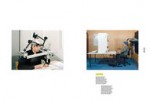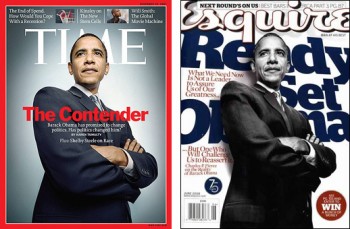 For the past 19 years photographers and photo editors have gathered near the Spanish border in Perpignan, France for a grand festival to celebrate photojournalism. This years festival from August 30th to September 14th will mark the 20th such meeting and I have been handed an interview with Jean-François Leroy the festivals founding and current director, where he tackles a few of the hard questions facing photojournalism and acknowledges completely missing the boat on the internet.
For the past 19 years photographers and photo editors have gathered near the Spanish border in Perpignan, France for a grand festival to celebrate photojournalism. This years festival from August 30th to September 14th will mark the 20th such meeting and I have been handed an interview with Jean-François Leroy the festivals founding and current director, where he tackles a few of the hard questions facing photojournalism and acknowledges completely missing the boat on the internet.
In 2000 I was scheduled to attend for my first time and my ticket was abruptly canceled by the editor when it was determined that visiting the festival was an unwise expenditure of our resources in suddenly tightening budgets. The opportunity to go never presented itself again and so I’ve been stuck hearing the stories of what went down from the people who visited but never having access to the photography or lectures presented at the festival to incorporate into my own magazine.
This of course, is the problem with Visa pour l’Image, everything that happens in Perpignan stays in Perpignan. And, now it’s even more serious because not only have you missed the opportunity to reach hundreds of photo editors who couldn’t attend you now need to reach beyond the magazines and convince consumers that important, powerful stories like the one’s featured at the festival need to be seen in publications. The consumers are in charge now and it’s only going to get worse so convincing Editors and Photo Editors to buy stories is no longer good enough, you also need the support of the end user.
The internet is the perfect medium for photojournalists and documentary photographers to show their work and if Jean-François is serious about keeping Visa pour l’Image relevant he needs to find ways that the festival can reach beyond the city limits of Perpignan, so we can all hear about the great reportages that were shown and the one’s that need a home and in many cases some will reach consumers online without a publication.
It’s time for someone with a powerful voice in the world of photojournalism to take the reins and lead this industry to the next level. I think Jean-François Leroy may be the right person to do it. Here’s an excerpt from the interview:
You’re great friends with Paul Fusco, from Magnum Photos, and often work with him. What’s the story behind that friendship?
In 2000, Jean-Bernard Maurel, who was working with Magnum Photos at the time, told me he’d found something in a drawer and was I interested. He pulled out a report Paul Fusco had done in 1968 after Bobby Kennedy’s assassination. Paul had covered the funeral train carrying the coffin placed on an open car and draped with the American flag, going all the way from Los Angeles to Washington. Thousands of Americans had gathered along the railroad track to see the funeral train go by and pay their last tribute to Bobby Kennedy. Paul, who was beside the coffin, photographed all these people, this cross-section of America bidding farewell to a dead man. For 32 years, the report had never been published! No one had shown any interest in it! We featured it as an exhibition at Visa pour l’Image, in a linear presentation, as if we too were in the train and were traveling across the States. When Paul arrived in Perpignan, he gave me a hug and said: “At least there’s you to understand my work.” And we’ve been great friends ever since. I really admire him as a photographer; his work on Chernobyl was outstanding and had all of Perpignan in tears. I think it’s such a shame that there are some people today who make millions, and a man like Paul, whose work is of such historic importance, is virtually destitute! That really riles me!
Without mentioning any names, some of the top ten photographers in the world today, including war photographers, “live in a garret”, surviving on less than 1000 euros a month, struggling to make ends meet.
 Yes, it’s a real problem; I’ll give two examples. Yuri Kozyrev is a contract photographer for Time Magazine, and has been going to Baghdad a couple of times a year for the last five or six years. Now look at his work, at what he produces, then compare it to what you see in Time. There is a gaping abyss between what his real work is and what gets published. Another example is Stanley Greene who wanted to do a report in Afghanistan and needed to find 8000 euros to get there, but couldn’t raise the money. I’m sorry to have to say this yet again – everyone’s getting sick of it, and I’m told that I’m biting the hand that feeds me– but we have to stop saying that the press doesn’t have any money! The press can find the money to buy exclusive rights to celebrity photos. A couple of years ago, one weekly magazine paid 150,000 euros for the exclusive rights to Jean-Paul Belmondo’s wedding; and they can’t fork out 10,000 euros to send Stanley Greene to Afghanistan for a month! It just makes me wonder. Fifteen years ago, when a newspaper commissioned a report, the paper would insure your equipment, pay for 150 rolls of film, cover all the lab development costs, and so on. Nowadays, you do digital work, your cameras aren’t paid for, you’re not even given a memory card – nothing. A digital camera costs a lot more than the camera you had fifteen years ago. And we’re not supposed to voice any criticism? Over the same period, the price of a page of advertising has gone up by a factor of 2 or 2.5; compare that to the prices paid for photos which have gone down by a factor of 2 or 2.5! Christophe Calais told me that he wanted to go to Kenya to report on the events there; he called a magazine he often works with, and was told “Listen, if you get the chance to take a shot of Obama’s grandmother, and if we do a double-page spread, I’ll give you 300 or 400 euros.” Hell! He wasn’t going there to do a Grandma Obama celebrity shoot! That’s the real problem, you see. Everything has become celebritized, everything is nice and clean, and we’re told that we mustn’t show any violence, but celebrities instead. Yet when you look at “real TV”, you’re shown violence! Lucas Menget, a top reporter with France 24 and a member of the Visa pour l’Image team, did an excellent 26-minute report on Iraq, and you can see violence there in his report. Just talk to Stanley Greene, Christophe Calais, Enrico Dagnino, Paolo Pellegrin, Noël Quidu, Laurent Van der Stockt, and so many others whose names I haven’t mentioned; they see violence out there in the field, in the events they cover. That’s the real story!
Yes, it’s a real problem; I’ll give two examples. Yuri Kozyrev is a contract photographer for Time Magazine, and has been going to Baghdad a couple of times a year for the last five or six years. Now look at his work, at what he produces, then compare it to what you see in Time. There is a gaping abyss between what his real work is and what gets published. Another example is Stanley Greene who wanted to do a report in Afghanistan and needed to find 8000 euros to get there, but couldn’t raise the money. I’m sorry to have to say this yet again – everyone’s getting sick of it, and I’m told that I’m biting the hand that feeds me– but we have to stop saying that the press doesn’t have any money! The press can find the money to buy exclusive rights to celebrity photos. A couple of years ago, one weekly magazine paid 150,000 euros for the exclusive rights to Jean-Paul Belmondo’s wedding; and they can’t fork out 10,000 euros to send Stanley Greene to Afghanistan for a month! It just makes me wonder. Fifteen years ago, when a newspaper commissioned a report, the paper would insure your equipment, pay for 150 rolls of film, cover all the lab development costs, and so on. Nowadays, you do digital work, your cameras aren’t paid for, you’re not even given a memory card – nothing. A digital camera costs a lot more than the camera you had fifteen years ago. And we’re not supposed to voice any criticism? Over the same period, the price of a page of advertising has gone up by a factor of 2 or 2.5; compare that to the prices paid for photos which have gone down by a factor of 2 or 2.5! Christophe Calais told me that he wanted to go to Kenya to report on the events there; he called a magazine he often works with, and was told “Listen, if you get the chance to take a shot of Obama’s grandmother, and if we do a double-page spread, I’ll give you 300 or 400 euros.” Hell! He wasn’t going there to do a Grandma Obama celebrity shoot! That’s the real problem, you see. Everything has become celebritized, everything is nice and clean, and we’re told that we mustn’t show any violence, but celebrities instead. Yet when you look at “real TV”, you’re shown violence! Lucas Menget, a top reporter with France 24 and a member of the Visa pour l’Image team, did an excellent 26-minute report on Iraq, and you can see violence there in his report. Just talk to Stanley Greene, Christophe Calais, Enrico Dagnino, Paolo Pellegrin, Noël Quidu, Laurent Van der Stockt, and so many others whose names I haven’t mentioned; they see violence out there in the field, in the events they cover. That’s the real story!
When we ask our parents and grandparents what they did about the Nazi concentration camps, they tell us that they didn’t know about them. And it’s true that many people only discovered what had really happened in the camps when they saw photos taken by Lee Miller and Margaret Bourke White. Today we’re lucky enough to be able to see everything. No country is completely closed off; it might be difficult to take pictures in Burma or North Korea, but you end up getting something. With modern transmission facilities, satellite phones and all the advances of communication technology, it’s much easier than it used to be. So what will we say when our children and grandchildren ask us what we did about Darfur? It’s a philosophical problem. Photographers and journalists, whether with the written press, radio or television, often run the most extraordinary risks so that they can show what’s really happening. For years we were told we had a duty to history, then a duty to remember, so let’s now say that we have a duty to see and to look! I don’t want to live in a virtual world, a nice little, cuddly, fluffy world where everybody’s happy, where everyone is sweet as sugar candy and where everyone has heaps of money. People often say that Visa pour l’Image is a festival with commitment; I would say that we are activists, that we want to be militant because we, the organizers and photographers at the festival, are journalists.
Continue reading




